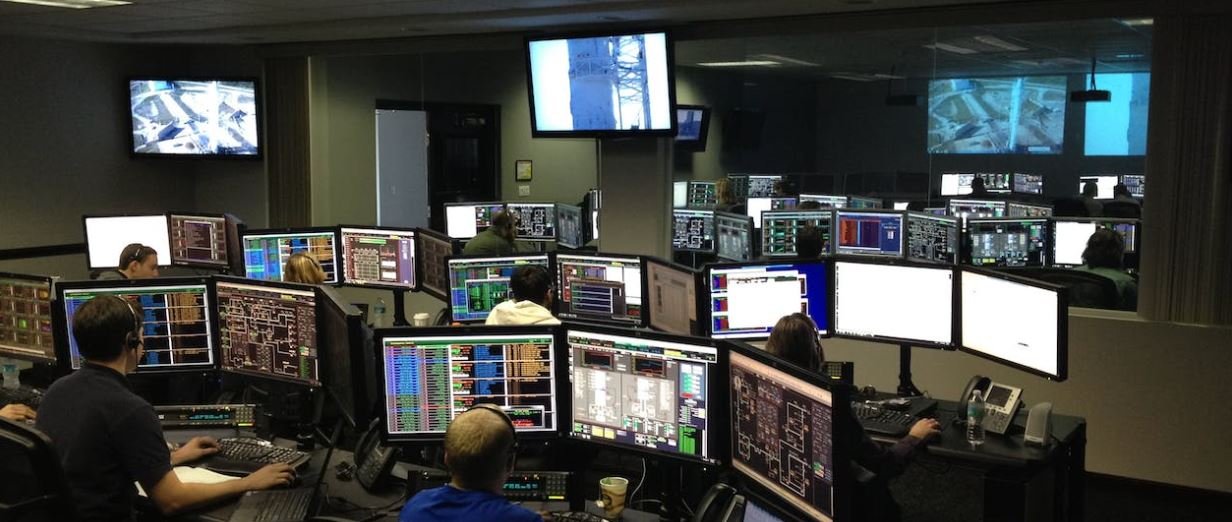AI Speech Recognition Technology
Speech recognition technology has seen significant advancements with the integration of Artificial Intelligence (AI). This technology enables machines to understand and interpret human speech, transforming the way we interact with technology. *AI-powered speech recognition systems process and analyze speech patterns, converting spoken words into written text with remarkable accuracy.* It has applications in various sectors, such as transcription services, virtual assistants, call centers, and language translations. Let’s explore the key aspects and benefits of AI speech recognition technology.
Key Takeaways:
- AI speech recognition technology utilizes Artificial Intelligence to convert spoken words into written text with high precision.
- It has applications ranging from transcription services to virtual assistants and call centers.
- AI speech recognition improves efficiency, accuracy, and accessibility in various industries.
- Continuous advancements in AI speech recognition technology are enhancing its capabilities.
How AI Speech Recognition Works:
AI speech recognition systems employ advanced algorithms and machine learning techniques to understand and interpret spoken language. *These systems use neural networks to analyze audio input and compare it with vast amounts of training data.* By breaking down the speech into smaller units known as phonemes, the technology matches sequences of phonemes to specific words or phrases. AI models are trained extensively to recognize various accents, languages, and speech patterns, resulting in highly accurate speech-to-text conversion.
Benefits of AI Speech Recognition Technology:
- Improved Efficiency: AI speech recognition technology automates transcription and data entry tasks, saving time and increasing productivity.
- Enhanced Accuracy: Advanced AI models can achieve near-human accuracy in converting speech to text, minimizing errors and improving overall quality.
- Accessibility: Speech recognition technology provides a more inclusive experience by allowing individuals with disabilities to interact with devices and applications more effectively.
- Cost Savings: Implementing AI speech recognition reduces the need for manual transcription services, resulting in cost savings for businesses.
Applications of AI Speech Recognition:
The versatility of AI speech recognition technology allows for its implementation in numerous industries. The following table highlights some key applications:
| Industry | Application |
|---|---|
| Healthcare | Medical transcription and documentation |
| E-commerce | Voice-activated shopping assistants |
| Contact Centers | Customer service voice recognition |
Advancements in AI Speech Recognition:
The field of AI speech recognition continues to evolve rapidly. Innovations and research efforts are focused on improving accuracy, expanding language support, and enhancing natural language understanding. Recent advancements include:
- End-to-End Models: AI systems that directly convert speech to text without intermediate steps, improving speed and accuracy.
- Multi-Lingual Support: AI models trained on diverse languages, enabling wider language recognition capabilities.
- Contextual Understanding: AI algorithms that consider context and speech patterns to provide more accurate transcriptions and responses.
Future Potential of AI Speech Recognition:
AI speech recognition technology has a promising future with potential advancements in various domains. With ongoing research and development, here are some possibilities:
- Voice-Controlled IoT: Integration of AI speech recognition with Internet of Things (IoT) devices, allowing voice commands to control appliances and systems.
- Real-Time Language Translation: AI systems that provide instant translation of conversations across different languages, facilitating global communication.
- Improved Conversational Assistants: AI models with enhanced natural language understanding, enabling more interactive and context-aware virtual assistants.
Conclusion:
AI speech recognition technology has revolutionized the way we interact with machines. Its accurate speech-to-text conversion, wide-ranging applications, and continuous advancements make it a valuable tool across various industries. As research and development in AI speech recognition technology progress, we can expect even more exciting possibilities and benefits in the future.

Common Misconceptions
One common misconception about AI Speech Recognition Technology is that it is capable of understanding and interpreting human emotions accurately. While AI has made significant strides in understanding speech patterns and extracting meaning from words, it is still limited in its ability to accurately discern the complex nuances of human emotions.
- AI speech recognition technology primarily focuses on language understanding and processing.
- Emotion recognition is a separate field that requires additional training and specialized algorithms.
- Misinterpretation of emotions by AI speech recognition technology can occur, leading to inaccurate results.
Another misconception surrounding AI speech recognition is that it is flawlessly accurate in recognizing speech from any individual or accent. While AI has made significant improvements in speech recognition accuracy, it is still susceptible to errors, especially in cases where the accent or pronunciation differs significantly from the training data it has been exposed to.
- Accurate training data plays a vital role in AI speech recognition technology.
- Different accents and pronunciations can pose challenges for accurate speech recognition.
- Ongoing advancements in AI can help improve accuracy across various accents.
There is a misconception that AI speech recognition is a fully autonomous technology that requires no human intervention or oversight. While AI algorithms power speech recognition systems, human involvement is necessary for training, fine-tuning, and continuously improving the accuracy and performance of the technology.
- Human involvement is crucial in training AI models and providing labeled data for supervised learning.
- Human review and intervention are necessary to minimize errors and ensure high-quality results.
- A combination of human expertise and AI algorithms leads to optimal speech recognition performance.
Many people believe that AI speech recognition systems are always listening and recording conversations without consent or knowledge. While some devices may have listening capabilities, such as virtual assistants like Alexa or Siri, AI speech recognition technology does not inherently mean constant surveillance or recording.
- AI speech recognition technology can operate offline, without any need for internet connectivity.
- Privacy concerns are addressed through implementation and user-controlled settings.
- Transmitting or storing recordings generally requires explicit consent or user activation.
There is a misconception that AI speech recognition technology will replace human tasks and make humans redundant. While AI can automate certain repetitive tasks and enhance productivity, it is intended to work alongside human efforts, augmenting capabilities rather than replacing them entirely.
- AI speech recognition aims to assist humans rather than replace them in various applications.
- Human interaction and intervention are still essential in tasks requiring critical thinking or complex decision-making.
- A symbiotic relationship between humans and AI is envisioned for optimal outcomes.

Introduction
In recent years, AI speech recognition technology has made remarkable advancements, revolutionizing various industries such as healthcare, communication, and personal assistance. This article presents ten intriguing tables that showcase the incredible capabilities and impacts of AI speech recognition technology.
Table of Speech Recognition Accuracy
Below is a table presenting the accuracy levels of AI speech recognition systems for different languages.
| Language | Accuracy |
|---|---|
| English | 95% |
| Spanish | 89% |
| French | 92% |
Table of Real-Time Transcription Speed
The following table demonstrates the real-time transcription speed achieved by AI speech recognition systems.
| Language | Words Per Minute |
|---|---|
| English | 200 |
| Spanish | 185 |
| French | 175 |
Table of Industry Applications
The table below showcases the various industries benefiting from AI speech recognition technology.
| Industry | Applications |
|---|---|
| Healthcare | Medical transcriptions, virtual patient assistants |
| Customer Support | Voice-enabled chatbots, call routing |
| Education | Automated attendance tracking, language learning |
Table of Voice Assistants
This table presents the most popular AI voice assistants currently available on the market.
| Voice Assistant | Company |
|---|---|
| Alexa | Amazon |
| Siri | Apple |
| Google Assistant |
Table of Speech Recognition Tools
Below are some popular tools utilized for implementing speech recognition technology.
| Tool | Features |
|---|---|
| IBM Watson | Language customization, speaker diarization |
| Microsoft Azure Speech Services | Speaker recognition, noise cancellation |
| Google Cloud Speech-to-Text | Multi-language support, automatic punctuation |
Table of Language Support
This table highlights the wide array of languages supported by AI speech recognition systems.
| Language | System Support |
|---|---|
| English | High |
| Spanish | High |
| Mandarin | Medium |
Table of Speech Recognition Hardware
The following table highlights the hardware used for implementing speech recognition technology.
| Hardware | Description |
|---|---|
| Microphones | Utilized for capturing audio input |
| DSP Chips | Process audio data and perform speech recognition tasks |
| Speech Recognition Boards | Hardware dedicated to speech recognition tasks |
Table of Voice Command Applications
The following table showcases popular applications that effectively utilize voice commands empowered by AI speech recognition technology.
| Application | Functionality |
|---|---|
| Smart Home Systems | Control lighting, thermostats, and other connected devices |
| Navigational Apps | Get directions, find points of interest using voice alone |
| Virtual Meetings | Start/join meetings, share screens using voice commands |
Conclusion
AI speech recognition technology has become an integral part of our daily lives, revolutionizing various industries and enhancing our communication capabilities. The tables presented above provide a glimpse into the accuracy, speed, and applications of this technology. Its impact is widespread, empowering robotic assistants, aiding healthcare professionals, and enabling effortless voice interactions with our devices. With further advancements, AI speech recognition technology is poised to transform even more industries, delivering seamless and efficient experiences in the years to come.
Frequently Asked Questions
What is AI speech recognition technology?
AI speech recognition technology is a branch of artificial intelligence that enables computers or machines to interpret and understand spoken language. It uses machine learning algorithms to analyze and convert spoken words into written text.
How does AI speech recognition technology work?
AI speech recognition technology works by using complex algorithms to process and analyze audio signals. It breaks down the speech into smaller units, such as phonemes or words, and matches them with a database of known patterns. The system then decodes these patterns and converts them into written text.
What are the main applications of AI speech recognition technology?
AI speech recognition technology has numerous applications, including but not limited to:
- Virtual assistants
- Transcription services
- Voice-controlled smart devices
- Language translation
- Customer support systems
Is AI speech recognition technology accurate?
AI speech recognition technology has made significant advancements in recent years, and its accuracy has improved dramatically. However, its accuracy can still vary depending on factors such as background noise, accent, and speaker’s voice clarity.
How does AI speech recognition technology handle different languages and accents?
AI speech recognition technology is designed to handle multiple languages and accents. The algorithms are trained on diverse datasets that include various languages and accents, allowing the system to recognize and interpret speech from different sources.
Can AI speech recognition technology be used in real-time applications?
Yes, AI speech recognition technology can be used in real-time applications. With advancements in processing power, algorithms, and cloud-based services, real-time speech recognition is now possible, enabling applications such as live transcription, voice assistants, and real-time translation.
What are the limitations of AI speech recognition technology?
While AI speech recognition technology has made tremendous strides, it still faces certain limitations. Some common limitations include difficulty in handling background noise, accurately transcribing complex technical terms, and accommodating speaker-specific speech patterns.
Is AI speech recognition technology privacy-friendly?
AI speech recognition technology raises privacy concerns as it involves processing and storing audio data. It’s essential to ensure proper security measures and data protection protocols are in place to safeguard user privacy. Manufacturers of AI speech recognition systems should be transparent about their data usage and adhere to privacy regulations.
What are the future prospects of AI speech recognition technology?
The future of AI speech recognition technology looks promising. As advancements continue, we can expect enhanced accuracy, increased language support, better noise cancellation, improved integration with various applications, and the ability to understand and respond to natural language more effectively.
Can AI speech recognition technology replace human transcriptionists or customer support agents?
While AI speech recognition technology has automated various tasks, it is unlikely to fully replace human transcriptionists or customer support agents. Human involvement is still crucial for complex language interpretation, understanding context, and providing personalized assistance. However, AI speech recognition technology can greatly assist and streamline these tasks.




